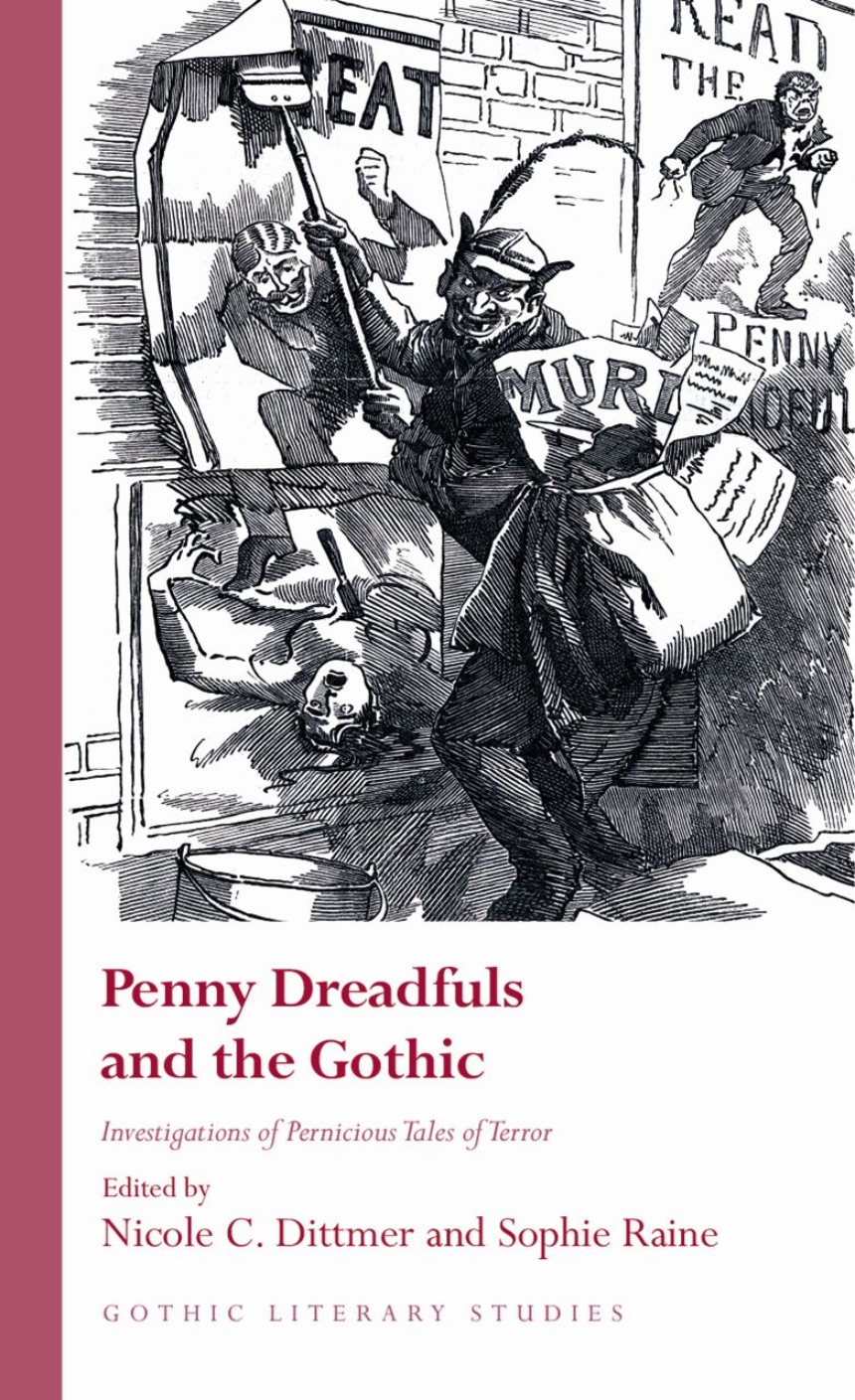Penny Dreadfuls and the Gothic
Investigations of Pernicious Tales of Terror
9781786839701
Distributed for University of Wales Press
Penny Dreadfuls and the Gothic
Investigations of Pernicious Tales of Terror
Uncovers neglected Gothic texts of the nineteenth century crucial to understanding working-class popular culture.
This collection of essays recovers a plethora of penny dreadful titles which have, until now, been largely neglected by literary studies and reveals the cultural, social, and literary significance of these working-class texts. It demonstrates the penny dreadful’s importance to our understanding of both working-class Victorian literature and the Gothic mode, providing new insights into the fields of Victorian literature, popular culture, and Gothic fiction more broadly. Through its analysis of penny dreadfuls, the collection offers an in-depth and intertextual exposition of Victorian society, literature, and gothic representations.
This collection of essays recovers a plethora of penny dreadful titles which have, until now, been largely neglected by literary studies and reveals the cultural, social, and literary significance of these working-class texts. It demonstrates the penny dreadful’s importance to our understanding of both working-class Victorian literature and the Gothic mode, providing new insights into the fields of Victorian literature, popular culture, and Gothic fiction more broadly. Through its analysis of penny dreadfuls, the collection offers an in-depth and intertextual exposition of Victorian society, literature, and gothic representations.
248 pages | 4 halftones | 5 1/2 x 8 1/2 | © 2023
Literature and Literary Criticism: General Criticism and Critical Theory
Reviews
Table of Contents
Part One: The Progression of Pennys, or Adaptations and Legacies of the Dreadful
1.Penny Pinching: Reassessing the Gothic Canon through Penny Blood Reprints Hannah-Freya Blake and Marie Leger-St-Jean
2.“As long as you are industrious, you will get on very well”: adapting The String of Pearls economies of horror
Brontë Schiltz
3.“Your lot is wretched, old man”: Anxieties of Industry, Empire and England in George
Reynolds’ Wagner, the Wehr-Wolf
Dr Hannah Priest.
Part Two: Victorian Medicine and Sciences, or Dreadful Discourses of the Gothic
4.“Embalmed pestilence”, “a contagious disease”: Discourse of contamination, contagion, and the Gothic marginalisation of penny dreadfuls by their contemporary critics
Manon Burz-Labrande
5.“A Tale of the Plague”: public health and epidemic disease in British popular fiction, 1832-48
Joseph Crawford
6.“Mistress of the broomstick”: Biology, Ecosemiotics, and Monstrous Women in Wizard’s The Wild Witch of the Heath; or the Demon of the Glen
Nicole C Dittmer
Part Three: Mode, Genre and Style, or Gothic Storytelling and Ideologies
7.A Ventriloquist and a Highwayman Walk into an Inn...Early Penny Bloods and the Politics of Humour in Valentine Vaux and Sixteen-String Jack
Celine Frohn
8.Dreadful Anticlericalism: James Malcolm Rymer’s Gothic Ideology
Rebecca Nesvet
9.Unearthing Newgate’s Haunted Legacy: The Gothic tourist in Thomas Peckett Prest’s Newgate: A Romance
Sophie Raine
Conclusion
Notes on Contributors
Index
1.Penny Pinching: Reassessing the Gothic Canon through Penny Blood Reprints Hannah-Freya Blake and Marie Leger-St-Jean
2.“As long as you are industrious, you will get on very well”: adapting The String of Pearls economies of horror
Brontë Schiltz
3.“Your lot is wretched, old man”: Anxieties of Industry, Empire and England in George
Reynolds’ Wagner, the Wehr-Wolf
Dr Hannah Priest.
Part Two: Victorian Medicine and Sciences, or Dreadful Discourses of the Gothic
4.“Embalmed pestilence”, “a contagious disease”: Discourse of contamination, contagion, and the Gothic marginalisation of penny dreadfuls by their contemporary critics
Manon Burz-Labrande
5.“A Tale of the Plague”: public health and epidemic disease in British popular fiction, 1832-48
Joseph Crawford
6.“Mistress of the broomstick”: Biology, Ecosemiotics, and Monstrous Women in Wizard’s The Wild Witch of the Heath; or the Demon of the Glen
Nicole C Dittmer
Part Three: Mode, Genre and Style, or Gothic Storytelling and Ideologies
7.A Ventriloquist and a Highwayman Walk into an Inn...Early Penny Bloods and the Politics of Humour in Valentine Vaux and Sixteen-String Jack
Celine Frohn
8.Dreadful Anticlericalism: James Malcolm Rymer’s Gothic Ideology
Rebecca Nesvet
9.Unearthing Newgate’s Haunted Legacy: The Gothic tourist in Thomas Peckett Prest’s Newgate: A Romance
Sophie Raine
Conclusion
Notes on Contributors
Index

